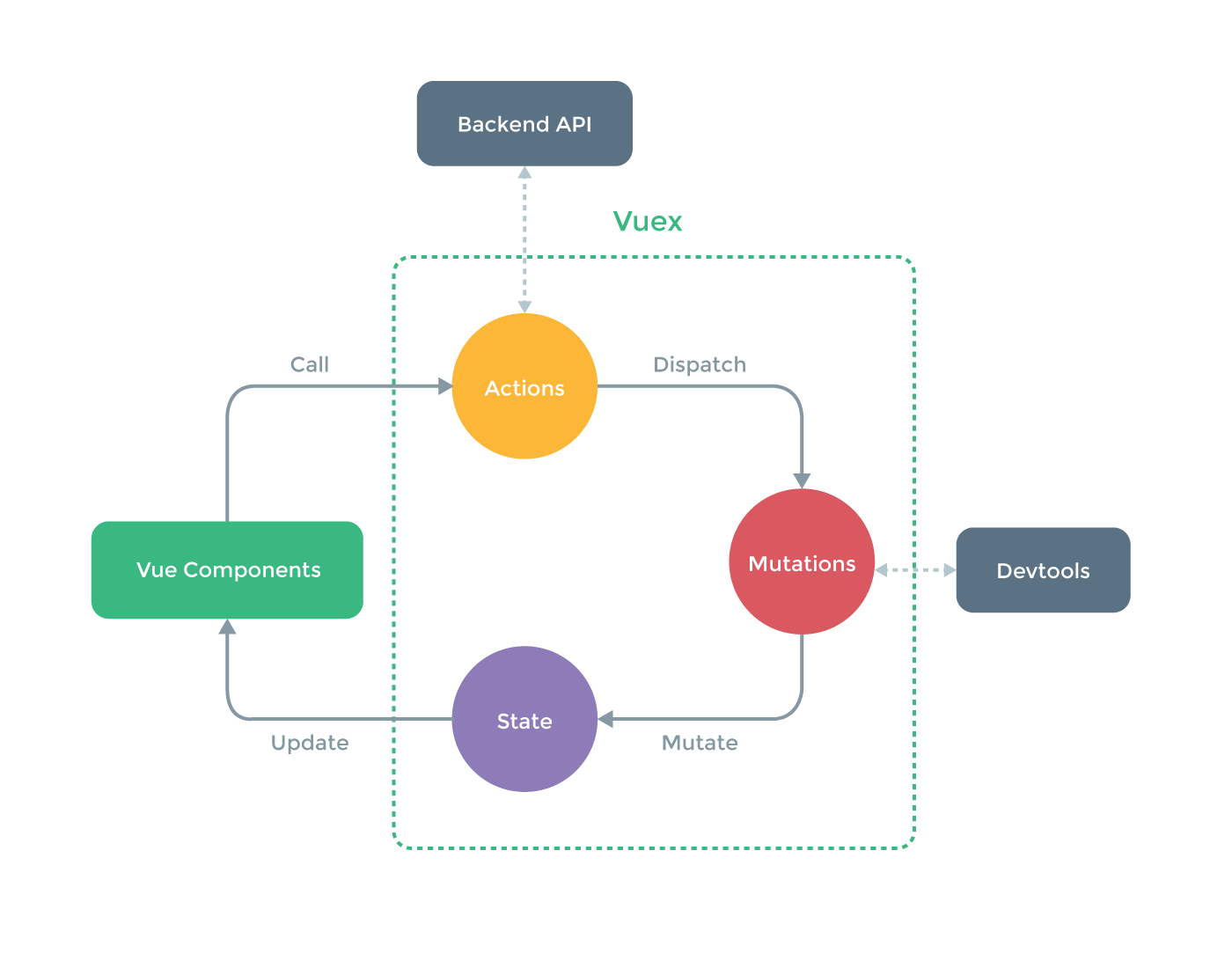数据流
为了更好地理解 Vuex app 中的数据流,我们来开发一个简单的计数器 app。注意:这个例子仅仅是为了更好地解释概念,在实际情况中并不需要在这种简单的场合使用 Vuex.
Store
// store.js
import Vue from 'vue'
import Vuex from 'vuex'
Vue.use(Vuex)
// 应用初始状态
const state = {
count: 0
}
// 定义所需的 mutations
const mutations = {
INCREMENT (state) {
state.count++
},
DECREMENT (state) {
state.count--
}
}
// 创建 store 实例
export default new Vuex.Store({
state,
mutations
})
Actions
// actions.js
export const increment = ({ dispatch }) => dispatch('INCREMENT')
export const decrement = ({ dispatch }) => dispatch('DECREMENT')
在 Vue 组件里使用
模板
<div>
Clicked: {{ count }} times
<button v-on:click="increment">+</button>
<button v-on:click="decrement">-</button>
</div>
代码
// 仅需要在根组件中注入 store 实例一次即可
import store from './store'
import { increment, decrement } from './actions'
const app = new Vue({
el: '#app',
store,
vuex: {
getters: {
count: state => state.count
},
actions: {
increment,
decrement
}
}
})
你会注意到组件本身非常简单:它所做的仅仅是绑定到 state、然后在用户输入时调用 actions。
你也会发现整个应用的数据流是单向的,正如 Flux 最初所定义的那样:
- 用户在组件中的输入操作触发 action 调用;
- Actions 通过分发 mutations 来修改 store 实例的状态;
- Store 实例的状态变化反过来又通过 getters 被组件获知。
